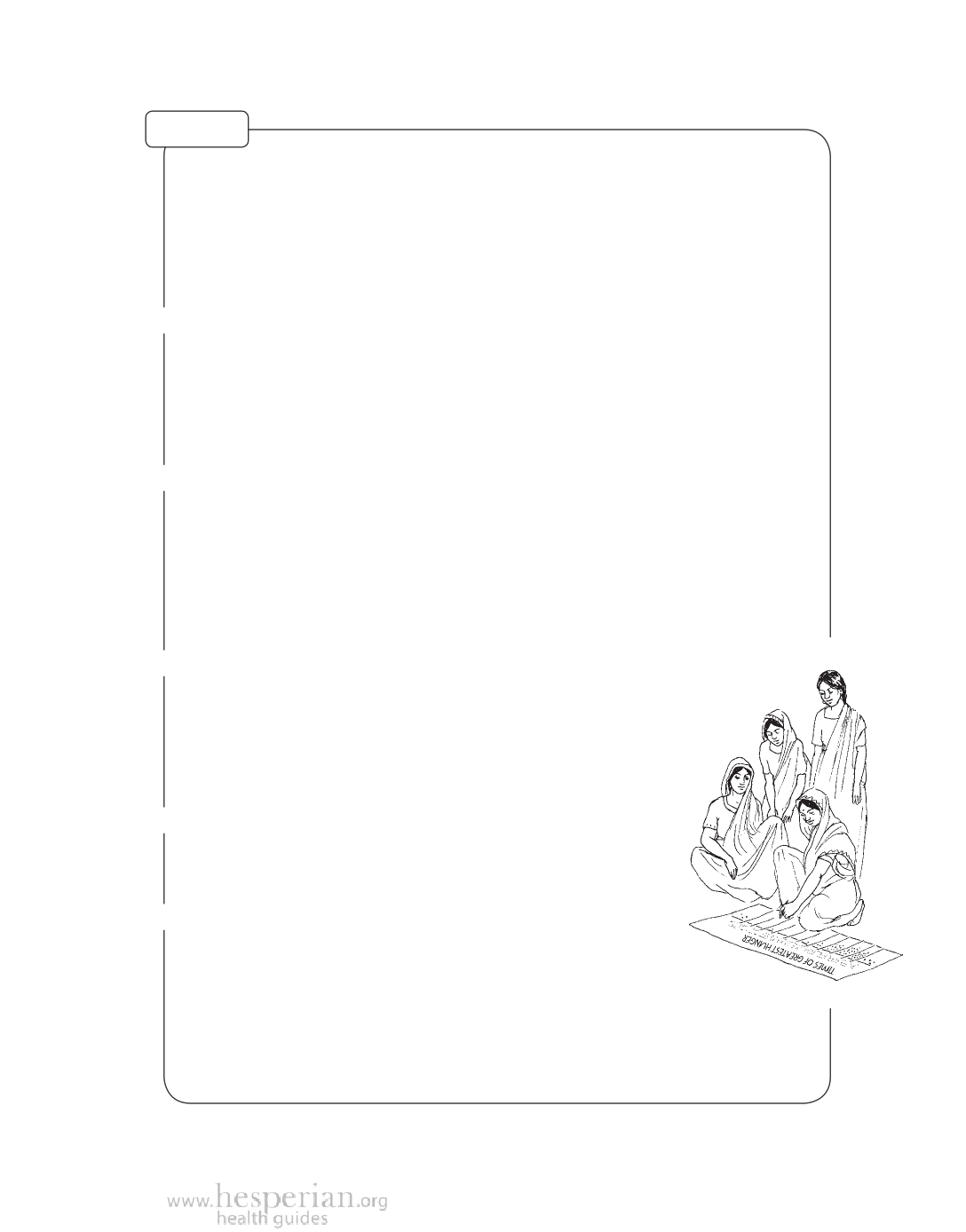
10 seeds
What is co m mu n i t y f o o d se cu r i t y ? 221
This activity can help people agree on what their community’s most urgent food
security problems are, and then help encourage them to make changes that improve
community food security.
Time: 2 hours
Materials: 10 seeds for each group, colored pens or markers, large poster paper
➊ Divide into groups of 8 to 10 people. Ask each group to talk about the different
things that make up food security, such as food production, food storage, credit,
stores and markets that sell healthy food, good land to grow food, and so on. Rural
communities that farm, hunt, and fish will have different food security issues than
people in cities. Talk about the different things that make up food security where
you are. On a piece of large poster paper, write or draw pictures to show the different
parts of food security.
➋ Give each group 10 seeds, and ask them to decide which parts of food security
are causing problems in their community, putting more seeds where there are
the most problems. For example: Is there hunger for some families because food
storage is poor? Or because there is no transportation to get food to the market,
or no market where you can buy food? Or because of crop pests, poor soil, or lack
of water? This will help the groups identify the weakest parts of their food security.
Different people in the community will have different problems. Make sure
everyone’s problems are heard.
➌ After each group identifies their most urgent food security problems, discuss
what local resources may help. If food production is the biggest problem,
are there people with knowledge and skills to start home gardens, or to
improve farming practices? If food storage is the biggest problem, what
ideas could improve it? If there are no markets, is there a way to open
a cooperative store to sell healthy food? Or to buy or share a truck to
bring food to the community? Every idea counts.
➍ After discussing possible solutions, have each group use another
large poster paper to draw or write the solutions that seem most
practical. Then divide the 10 seeds among these solutions, putting
more seeds near the solutions that seem most possible to carry out.
➎ After each group decides on problems and solutions, come
together in a larger group. Using the 10 seeds again, or just voting
by raising hands, choose the 1 or 2 most popular solutions. Discuss
how to put these solutions into practice. Who needs to be involved, and what
resources can the community provide? When can work begin? Set long-term goals,
such as “after 2 years, nobody in the community will go hungry.” Also set
short-term goals, such as pooling community resources each month to open a store
in 3 months, or preparing land for planting by the beginning of the growing season.
A Community Guide to Environmental Health 2012